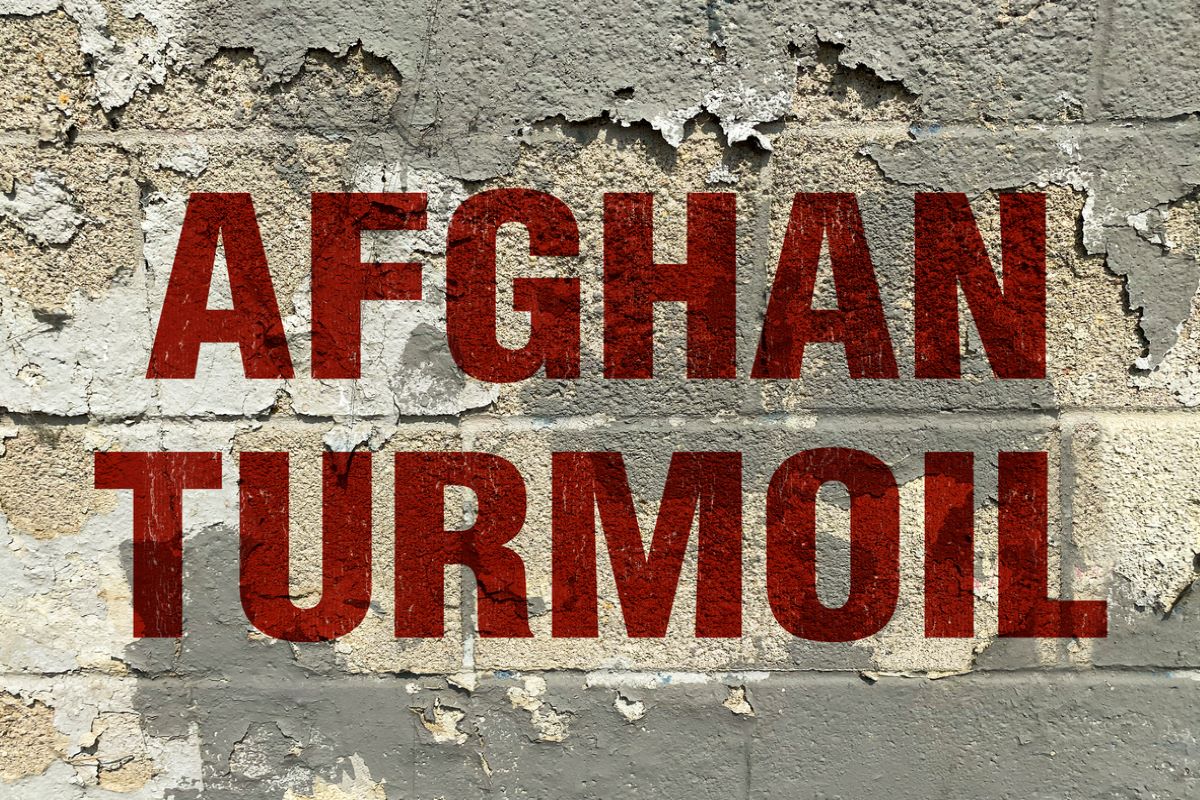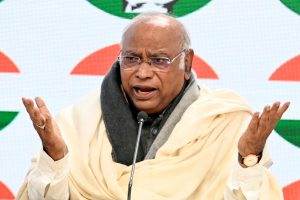US President Joe Biden cleared the air. No, it was not an act of nation-building. It was a war against one of the most resilient fighter forces of the world to secure indemnity from future terrorist attacks and perhaps to teach them a hard lesson. A stock-taking in May 2018, however, revealed that not only have the Taliban, the Haqqani network and Al Qaeda made a successful comeback, but also that ISIS has gained a foothold in the country.
Insurgents were found to be present in more than half of Afghanistan’s 398 districts, with several provinces in danger of falling to the Taliban. What was, then, the longest war for? President Biden owned up to no mistake in his decision to end the longest war in the history of the United States. But he rued, with a patronising contemplation, that even two decades of support failed to turn the Afghan military into a force capable of securing its own country. “We gave them every tool they could need.
Advertisement
We paid their salaries. Provided for the maintenance of their airplanes,” Biden said. “We gave them every chance to determine their own future. What we could not provide was the will to fight for that future.” And he is talking about fighting with a group which, by a wider consensus, is believed to be stronger now than at any point since 2001, a group that has withstood counterinsurgency operations from the world’s most powerful security alliance, the North Atlantic Treaty Organization (NATO), and three U.S. administrations in a war that has killed an endless number of people.
With up to 85,000 full-time fighters, the Taliban controlled one-fifth of the country and continued to launch attacks, both battered and hardened by its experience of fighting with one of the world’s most powerful and technologically advanced military coalition forces.
“The Afghans found it difficult to buy into the assertion that the most powerful country in the world, the US, was unable to stabilise Afghanistan”, (“A few thousand Taliban were ‘nothing to defeat’ for America; it could ‘get rid of them in a week’ ”) writes Sharifullah Dorani in his 2019 book America in Afghanistan: Foreign Policy and Decision Making from Bush to Obama to Trump after deliberating with a wide cross-section of people, wondering why ‘bewildering’ changes took place in American Afghan policy over the course of 16-and-a-half years.
The cluster of contradictions ~ a witch’s brew, no less ~ was made up of “the inborn Afghan characteristics/ complexities/differences, as US policy makers invoked, encompassed Afghanistan suffering deeply from decades of civil war, religious extremism, drug mafia, neighbouring interference (Pakistani in particular, with which Afghanistan shared 2,500 miles of porous border), poverty, unemployment, lack of education, and the presence of different ethnic, linguistic, sectarian, tribal, and political groups”, antagonistic to each other for centuries.
It was compounded by the fact that the Taliban insurgency was indigenous and from the largest ethnic group (Pashtun) while the Kabul Government was largely being ‘made up of minorities’. America failed because of its deep cultural misunderstanding of Afghanistan but then it cannot be said to be very sensitive to cultures other than its own. Many Pashtun leaders and intellectuals regret how their lands have been transformed into a staging ground for a global conflict for some of the world’s most powerful regular and private armies and how their people remain as one among the most maligned of the 21st century.
Pashtun nationalism is a potent force and Pashtuns are not only the predominant ethnic group in much of Afghanistan’s south and east, but are also a major ethnic group in Pakistan’s north and west. The reason for Afghanistan being often monikered as the “land of the Pashtuns” is because Afghan identity has historically been synonymous with “Pashtun” however much the outside world labels its people regardless of ethnic origin and tends to conflate an Afghan national identity with the Pashtun identity.
It might be a cruel irony that while the South Vietnamese Thieu government lasted three years (1972–5) following the US withdrawal of ground forces (and the Moscow-dependent Najib regime in Kabul likewise lasted three more years ~ 1989–92 ~ before collapsing), President Ashraf Ghani’s coalition government did not last a week independently. And in seeking to hide their failure by spin, now the Americans blame the Afghans for lack of enough will to fight the Taliban, fighting whom they, the mightiest nation on earth, expended nearly two decades without being able to incapacitate them. In a statement issued by President Biden, we learned that America invested nearly $1 trillion, trained over 300,000 Afghan soldiers and police, equipped them with state-of-the-art military equipment, and maintained their air force as part of the longest war in U.S. history.
“One more year, or five more years, of U.S. military presence would not have made a difference if the Afghan military cannot or will not hold its own country”, Biden said, justifying his stand seeking to put an end to “an endless American presence in the middle of another country’s civil conflict”. If that is indeed the case, what then justifies its two-decade long stay with each year of occupation adding to its litany of woes?
According to Defense Department sources, current as of October-November 2019, since 2001, an estimated 157,000 people had been killed in the war in Afghanistan, of which some 64,124 Afghan security forces, 43,074 Afghan civilians, 42,100 Taliban fighters and other insurgents, 2,300 U.S. military personnel, 3,814 U.S. contractors, 1,145 NATO and coalition troops, 424 humanitarian aid workers, 67 journalists and media workers are a part. Last year alone, 3,804 Afghan civilians were killed in the war, according to the United Nations. What accounts for such a monumental loss of material and human resources? Why didn’t it leave Afghanistan earlier?
The rhetorical question that follows ~ if Russia’s takeover in 1978 to implement revolutionary social and economic policies by a Communist regime was a disaster, no less was its withdrawal in 1989 that not only set in motion a period of civil war and destroyed the formal state structure but also gave rise to the Taliban and their reactionary Islamist regime; but how is American occupation different, now when all its pretension to moral grandstanding wears off?
The bottomline is this: the USA took four Presidents, thousands of lives, trillions of dollars and nearly twenty years of handwringing and dissipation to replace Taliban with Taliban and to pitch Afghanistan from one civil war to another in the making. What is worse, it now refuses to own up responsibility. Then there is the problem of lack of contextual understanding. Former President Donald Trump was ‘convinced’ that the Afghanistan War was a ‘waste’ of American money and lives and consequently was not in US national interests. Even though the US spent billions of dollars, lost thousands of lives, the ‘ungrateful’ Afghans hated America.
Even though the US forces trained Afghan security forces, they killed their trainers. That the school made by Americans today would be blown up by the insurgents the next day.
But how did it come to such a pass? When in 2001, the gates of the American Embassy in Kabul that had remained shut since the killing of its Ambassador Adolph Dubs in 1979, opened – even though America seemed to have abandoned Afghanistan after the Soviet Union disintegrated and the Mujahideen toppled the communist government of President Mohammad Najibullah – thousands of United States troops entered Afghanistan as part of President George W. Bush’s Global War on Terror (GWOT), there was palpable jubilation.
Western leaders, especially President Bush and British Prime Minister Tony Blair, lulled the Afghans into the dream of a utopia disinfected of the Taliban and of a haven of freedom unblemished by civil war, terrorism, criminality and abuse of power by the strongmen (or warlordism), lawlessness and corruption, poverty and unemployment, opium trade and oppression of women; the international community would assist the Afghans to form a government with strong institutions to establish peace, prosperity, stability and democracy and thus to live happily ever after.
But what happened on the ground? All the constituent parties ~ the U.S. and its allies, the Afghan government, Afghan paramilitary groups, the Pakistani government, Afghan Taliban, Pakistani Taliban and many other insurgent groups ~ as the fighting escalated through most of Afghanistan and the north-western part of Pakistan ~ conducted military operations that killed civilians in droves, who, on a daily basis, were killed or injured on both sides either by the savage attacks by the Taliban, or by the Afghan Government or US anti-terrorism campaigns.
Going by the enormous number of civilian fatalities, the “war on terror” became, in effect, a war against civilians. The systemic and deliberate use of unlawful practices by the U.S. military, the Afghan security forces and paramilitary groups proved that the propaganda about the establishment of a human rights-based system was a sham. Of special nuisance had been the careless use of U.S. air power, which has killed scores of civilians, and the apparent lack of sensitivity by U.S. troops to local perceptions, laws and customs; for instance, when U.S. Special Forces, during routine sweeps of Afghan villages searching for weapons and members of resistance groups, physically abused villagers, damaged personal property, and subjected women to body searches.
Now the sick hurry to leave Afghanistan, the chaos at Kabul airport leading to deaths of civilians, all desperate to leave the god-forsaken, America-forsaken graveyard of empires, President Ashraf Ghani’s flight, American officials burning sensitive documents and evacuating the embassy for the airport, all the Western diplomatic missions being abandoned and the Taliban sweeping back to fill the vacuum left by the Americans do not portend ‘success’ of America’s civilisation process, if there ever was one.
While leaving Afghanistan to the strategic embrace of the Middle Kingdom makes the failure even more colossal, leaving it to the savagery of the Taliban is an act of monumental betrayal.
(The writer is a Kolkata-based commentator on politics, development and cultural issues)











